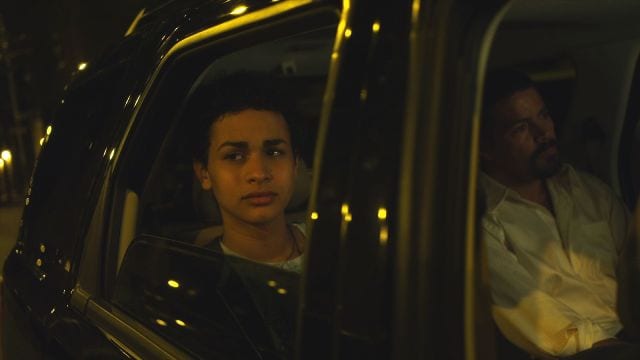The Privilege of Representation
by Mynette Louie on March 2, 2012 in Casting
There’s been a lot of chatter about race and representation lately — “Linsanity,” the Pete Hoekstra campaign debacle, the overwhelmingly white makeup of Oscar voters and nominees alike, Billy Crystal in blackface at the Oscars, the lack of Asian American actors on the New York stage, the controversy over the white savior complex in The Help, the difficult development path of Red Tails, the whitewashing in films like Akira and Hunger Games, Spike Lee’s declaration at Sundance that Hollywood knows nothing about black people, and so on. I’m thankful for all the recent attention given to these issues, but for many minority content creators such as myself, race and representation always loom large.
We know why Hollywood doesn’t like to cast minority actors in lead roles: allegedly, they aren’t “bankable.” But why not? Could it be because Hollywood doesn’t like to cast minority actors in lead roles, so there’s little chance of them ever breaking out and becoming bankable? Vicious cycle alert! So, it’s largely up to us indie filmmakers to discover the Gabourey Sidibes and Adepero Oduyes, and to hope that they will someday be able to trigger a project’s greenlight.
In my own experience, I have to admit: casting minority actors is generally harder than casting white ones because the pools of minority actors are much smaller. Whether this is because of socioeconomic limitations or cultural priorities or other reasons, the fact is that there just aren’t as many minority actors to choose from. Filmmakers and casting directors often have to make a special effort to seek them out.
For example, when we were casting Children of Invention, which has two Chinese American child leads, the director Tze Chun and I went to schools in Chinatown, Flushing, and Sunset Park to audition hundreds of Chinese kids. But our efforts were a bust, and we ended up bringing on the wonderful Susan Shopmaker to help us fill our fourteen Chinese roles. It was particularly difficult to find older Chinese actors. At one point, Susan said to me, “Mynette, I think you and I just have to go down to Flushing one day and pull Chinese grandpas off the street.” Tze and I did in fact troll through Chinatown’s Columbus Park in an attempt to recruit older Chinese folks to audition. Unfortunately, they all thought we were crazy.
Community casting may not have worked out for us in the end, but it does sometimes result in amazing discoveries—like Harmony Santana of Gun Hill Road, Algenis Perez Soto of Sugar, and Alejandro Polanco of Chop Shop. But is that really worth the trouble of trekking to the far, non-gentrified corners of the five boroughs and beyond to post flyers, talk to community groups, and audition hundreds, even thousands of non-actors? Yes, it’s absolutely worth it.
It’s worth it not only because putting complex minority characters on screen can help shatter stereotypes, but also because—you producers are gonna love this—it might save you money! I’m talking about the SAG Diversity-in-Casting Incentive, which allows you to use the modified low-budget or low-budget agreements even if your production budget exceeds the typical maximums for those agreements. This can free up tens, even hundreds of thousands of dollars to spend on extra shooting days, more equipment, better music…you name it!
I’m not just talking to minority filmmakers here. This goes for all you white filmmakers too, especially the ones who live in big cities like New York and Los Angeles, where you interact daily with people of all stripes. Many indie films are as whitewashed as Hollywood ones, and there’s no financial excuse for that because most of the actors in such films are unknowns anyway. Maybe it’s because white filmmakers are afraid of offending minorities so they’d rather just not cast them at all, or maybe it’s simply because they want to depict a culture with which they are familiar. If the former, I would say: don’t be afraid, just be sensitive (contrary to popular white liberal belief, we don’t live in a post-racial society). If the latter, I’d say: that’s totally understandable, but if your films are set in big cities with diverse populations, try not to be lazy and just cast white actors; look at actors of all races for your roles. (But please, no more ethnic-sidekick-as-hipster-novelty-acts!)
And remember: having a minority character doesn’t mean that your film has to be about racial issues, or that you have to explain the significance of the character’s race. In fact, it’s better if you don’t call any attention to it. After all, interracial interactions and relationships are normal, natural, everyday things. And minorities are normal, natural, everyday folks.
I hope that all filmmakers will make a conscious effort to open up their casting pool to underrepresented minorities. Ask your casting directors to go outside their comfort zones and expand their call lists. Attend Latino, Asian American, African American, Native American, and other such film festivals to discover minority talent. These festivals screen many good films that often get overlooked by the big festivals.
Don’t get me wrong, no artist should have to bear the burden of representation if he or she doesn’t want to, and filmmakers should always pick the best actor for the role, regardless of race. But for me, representation is not a burden; it is a privilege. We as writers and directors and producers have the privilege of representing underrepresented groups, which gives us the potential to change people’s prejudices and perceptions, and ultimately, the power to change the world. So let’s use our power for good, okay?


